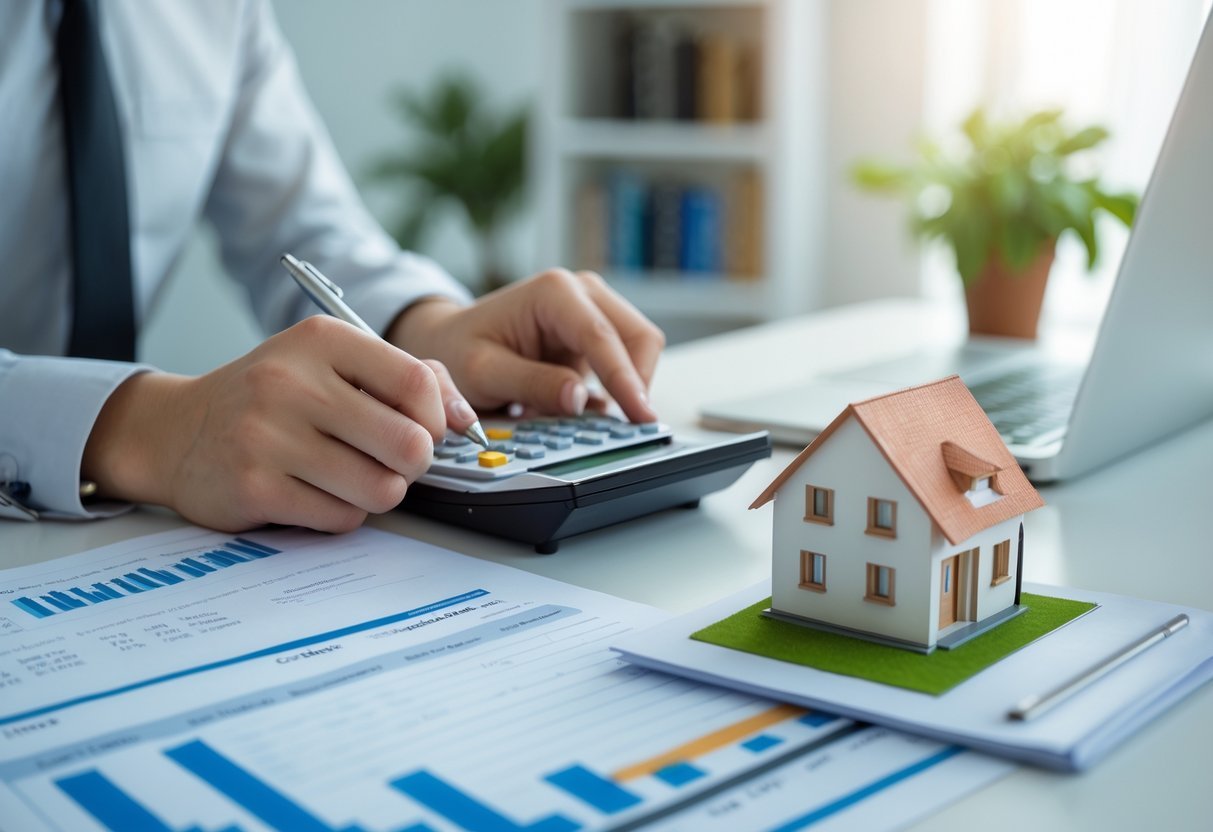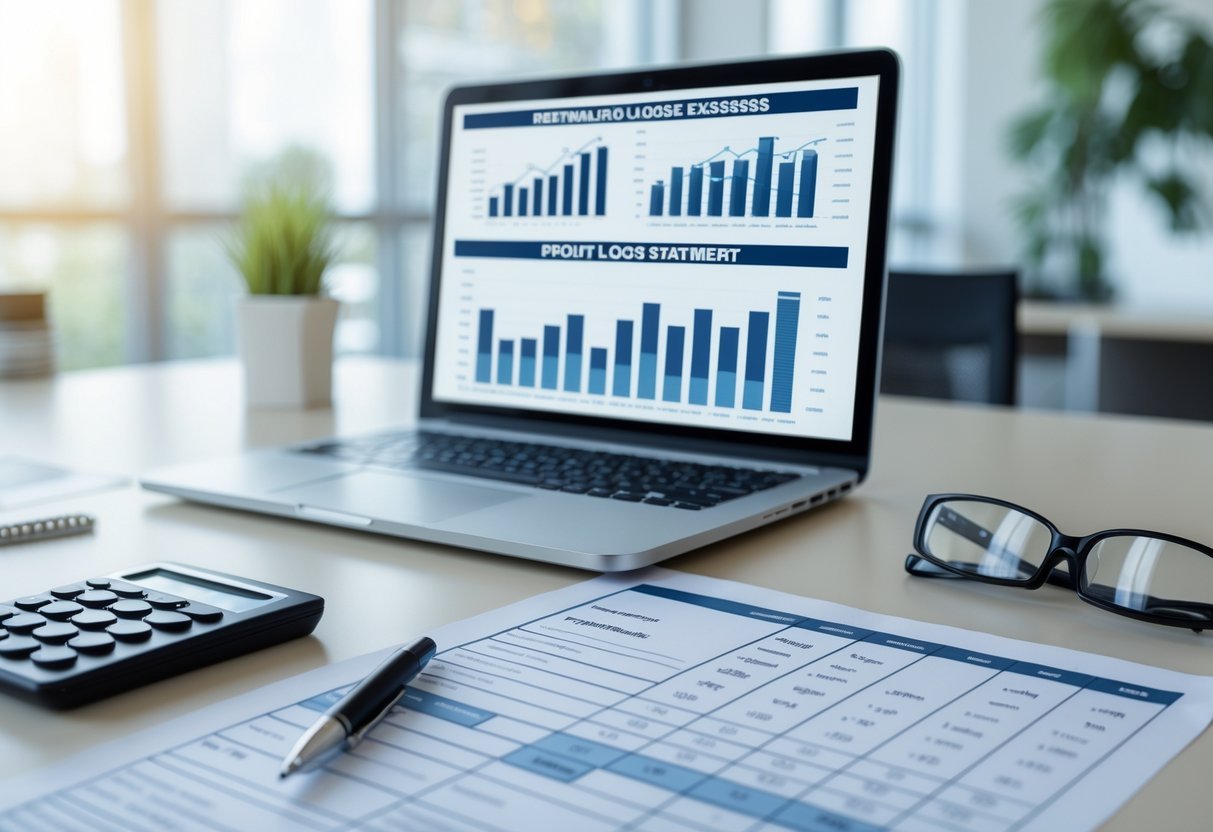Tracking the right performance metrics can make the difference between a profitable rental property investment and a costly mistake. As a real estate investor, you need clear indicators to evaluate your properties’ financial health and guide smart decision-making.
The seven most critical rental property metrics measure your return on investment, operating efficiency, and long-term value growth potential through key calculations like net operating income, cap rate, and cash flow analysis. These numbers tell you whether your investment strategy is working and help identify opportunities to boost performance.
Monitoring these essential metrics gives you an objective way to compare different properties, spot concerning trends early, and make data-driven improvements to your rental business. The right performance tracking empowers you to maximize returns while minimizing risk.
Key Takeaways
- Regular tracking of key performance metrics helps identify profitable opportunities and potential issues
- Financial calculations like NOI and cap rate provide objective measures of investment success
- Property metrics enable data-driven decisions to optimize returns and reduce investment risk
Understanding Key Rental Property Performance Metrics
Tracking the right metrics helps you make data-driven decisions about your rental property investments. These essential measurements provide concrete insights into property performance, profitability, and potential returns.
Defining Rental Income and Gross Rental Income
Rental income represents the payments received from tenants for using your property. The base rent forms the foundation of your property’s income potential.
Gross rental income encompasses all possible rental revenue before any expenses or vacancies. This includes additional income sources like parking fees, pet rent, storage unit rentals, and utility reimbursements.
To calculate your potential gross rental income, multiply your monthly rent by 12. For example, a property renting for $2,000 per month has a potential gross rental income of $24,000 annually.
Net Operating Income (NOI) Explained
Net Operating Income measures your property’s profitability after deducting operating expenses from rental income. NOI excludes mortgage payments, income taxes, and capital expenditures.
Common operating expenses include:
- Property taxes
- Insurance
- Maintenance and repairs
- Property management fees
- Utilities (if not paid by tenants)
- Marketing costs
A positive NOI indicates your property generates enough income to cover its operating costs. This metric helps compare different properties regardless of their financing structures.
What Is Cash Flow in Rental Properties?
Cash flow represents the actual money remaining after paying all expenses, including mortgage payments. Positive cash flow means your rental income exceeds all costs.
Monthly cash flow calculation:
Rental Income
- Operating Expenses
- Mortgage Payment
= Cash Flow
Strong positive cash flow provides financial stability and helps build wealth through real estate investing. It offers protection against unexpected expenses and market fluctuations.
Importance of the Capitalization Rate (Cap Rate)
The cap rate measures your property’s potential return on investment, independent of financing. Calculate it by dividing the NOI by the property’s market value.
Cap Rate Formula:
Cap Rate = (NOI ÷ Property Value) × 100
A higher cap rate typically indicates greater potential returns but may also signal higher risk. Market averages vary by location and property type.
Cap rates help you compare different investment opportunities and determine if a property’s price aligns with its income-generating potential.
Core Profitability Metrics for Rental Properties
Measuring rental property performance requires tracking specific financial metrics that reveal true investment value and returns. These essential calculations help you make data-driven decisions about property acquisitions and ongoing management.
Return on Investment (ROI) Calculation
ROI measures the total return generated by your rental property investment relative to its cost. To calculate ROI, divide your net profit by the total investment cost and multiply by 100.
The formula is: ROI = (Net Profit / Total Investment) × 100
Your total investment includes:
- Purchase price
- Closing costs
- Renovation expenses
- Other initial costs
Net profit combines rental income and appreciation while subtracting operating expenses, mortgage payments, and maintenance costs.
A strong ROI for rental properties typically ranges from 8% to 12% annually, though market conditions affect this significantly.
Cash-on-Cash Return Demystified
Cash-on-cash return measures annual pre-tax cash flow against the actual cash invested. This metric focuses on cash distributions rather than total returns including appreciation.
The formula: Cash-on-Cash Return = (Annual Pre-Tax Cash Flow / Total Cash Invested) × 100
Your annual pre-tax cash flow includes:
- Rental income
- Other property income
- Operating expenses
- Mortgage payments
Most experienced investors target a minimum 8% cash-on-cash return, though returns vary by market and property type.
Internal Rate of Return (IRR) Insights
IRR calculations provide a sophisticated view of investment performance by considering the time value of money. This metric accounts for both current income and future property value.
IRR incorporates:
- Initial investment
- Periodic cash flows
- Expected sale proceeds
- Investment timeline
You can use IRR to compare different investment opportunities, even when their holding periods differ. A higher IRR indicates better returns relative to your initial investment.
Professional real estate investors typically seek IRR values between 15-20% for rental properties.
Evaluating Income and Expense Ratios
Three key financial ratios help determine the financial health and profitability of rental properties. These metrics reveal how efficiently you manage expenses, handle debt obligations, and generate positive cash flow.
Operating Expense Ratio
The operating expense ratio (OER) measures what percentage of your gross operating income goes toward property expenses. A lower ratio indicates better operational efficiency.
To calculate OER, divide your total operating expenses by gross operating income and multiply by 100. Operating expenses include maintenance, insurance, property management, and utilities.
A healthy OER typically falls between 40-60%. Properties with ratios above 60% may need cost-cutting measures or increased rental income to improve profitability.
Debt Service Coverage Ratio
The DSCR indicates your ability to cover mortgage payments with your property’s income. Lenders commonly use this metric to evaluate loan applications.
Calculate DSCR by dividing your net operating income by total debt service. A ratio of 1.25 or higher shows strong debt coverage ability.
Example DSCR Calculation:
- Net Operating Income: $50,000
- Annual Debt Service: $35,000
- DSCR = 1.43 (favorable coverage)
Net Cash Flow Analysis
Your net cash flow reveals the actual profit after accounting for all income and expenses, including debt service.
Track monthly cash flows to identify seasonal patterns and plan for major expenses. Regular monitoring helps detect potential issues before they impact profitability.
Key Components to Monitor:
- Rental income
- Late fees and other charges
- Operating expenses
- Mortgage payments
- Property tax obligations
- Insurance costs
Keep detailed records of both fixed and variable expenses to accurately project future cash flows and make informed investment decisions.
Assessing Property Value and Market Performance
Accurate property valuation and market analysis form the foundation of successful rental property investing. Key performance indicators and valuation methods help determine true market worth and potential returns.
Determining Market Value and Property Value
Property value assessment involves comparing similar properties that have recently sold in your area, known as comparables or “comps.” Focus on properties with matching characteristics like square footage, bedroom count, and amenities.
Professional appraisals provide detailed reports examining property condition, location factors, and market trends. These reports often include adjustments for differences between your property and comparable sales.
Key value factors to examine:
- Location and neighborhood demographics
- Property age and condition
- Recent renovations or upgrades
- Local economic indicators
- School district ratings
The Gross Rent Multiplier Approach
The Gross Rent Multiplier (GRM) helps quickly evaluate property values based on rental income potential. Calculate GRM by dividing the property’s price by its annual gross rental income.
GRM Formula:
GRM = Property Price ÷ Annual Gross Rental Income
A lower GRM typically indicates better value. Most residential properties have GRMs between 4 and 12, depending on the market.
Using a Rental Property Calculator
Digital calculation tools streamline the analysis process by combining multiple metrics into comprehensive reports. Input key variables like purchase price, expected rent, and operating expenses.
Common calculator outputs:
- Cash flow projections
- Return on investment (ROI)
- Cap rate analysis
- Monthly mortgage payments
- Operating expense estimates
Most calculators allow you to adjust variables to create different scenarios and compare potential outcomes.
Managing Occupancy, Vacancy, and Rent Growth
Tracking occupancy metrics and rent performance helps maximize your rental property’s financial success. Regular monitoring of these key indicators enables data-driven decisions about pricing and tenant retention.
Analyzing Vacancy Rate and Occupancy Rate
Vacancy rate calculation involves dividing the number of vacant units by total units and multiplying by 100. A healthy vacancy rate typically stays below 5%.
Your occupancy rate target should be above 90% to indicate competitive rental rates and strong market positioning.
Monitor both physical occupancy (units rented) and economic occupancy (actual rent collected vs potential rent). The difference between these metrics reveals income loss from concessions or delinquencies.
Take action when occupancy drops by reviewing your rental rates, marketing strategies, and property condition. Quick response to vacancy trends helps maintain stable rental income.
Tracking Rent Growth
Set up a quarterly rent analysis system to compare your rates against local market data. This helps identify opportunities for sustainable rent increases.
Track year-over-year rent changes for each unit type. Consider factors like property improvements, market conditions, and tenant payment history when planning increases.
Create a rent growth strategy that balances income optimization with tenant retention. Modest, regular increases often work better than large, infrequent jumps.
Use a spreadsheet to monitor both asking rents for vacant units and renewal rates for existing tenants. This data helps forecast future rental income and budget for property improvements.
Factoring Maintenance, Repairs, and Capital Expenditures
Tracking property maintenance costs and planning for major improvements directly impacts your rental property’s profitability and long-term value. Smart investors carefully calculate both routine upkeep and large capital expenditures to maintain accurate cash flow projections.
Understanding Maintenance and Repair Costs
Regular maintenance expenses include routine property upkeep and minor repairs like plumbing fixes, appliance repairs, and landscaping. These costs occur frequently and should be part of your monthly budget.
Track every maintenance expense meticulously, including both materials and labor. This data helps predict future costs and identify potential problem areas early.
Separate repairs into three categories:
- Emergency repairs (broken heating, water leaks)
- Preventive maintenance (HVAC servicing, gutter cleaning)
- Tenant-reported issues (appliance problems, minor fixes)
Planning for Capital Expenditures
Capital expenditures involve major property improvements that extend your property’s lifespan or increase its value. Examples include roof replacement, HVAC system upgrades, and kitchen renovations.
Create a capital expenditure schedule that estimates:
- Expected lifespan of major components
- Replacement costs
- Projected timeline for upgrades
Set aside 5-10% of your monthly rental income specifically for future capital expenditures. This reserve fund prevents financial strain when major improvements become necessary.
Applying the 50% Rule and 1% Rule
The 50% rule suggests setting aside half your gross rental income for property expenses, including maintenance, repairs, and capital expenditures. This conservative approach helps prevent cash flow problems.
The 1% rule recommends budgeting 1% of your property’s purchase price annually for maintenance and repairs. For a $300,000 property, plan for $3,000 yearly in upkeep costs.
These rules serve as general guidelines – your actual costs may vary based on:
- Property age and condition
- Local climate and weather impacts
- Quality of tenant maintenance
- Property type and size
Accounting for Taxes and Management Costs

Accurate tracking of tax obligations and management expenses directly impacts your rental property’s profitability. Proper accounting practices help maximize deductions while maintaining compliance with tax regulations.
Property Taxes and Tax Implications
Property taxes represent one of your largest recurring expenses as a real estate investor. Local tax assessors determine rates based on your property’s assessed value and location.
You must maintain detailed records of property tax payments for tax deduction purposes. Many investors set up dedicated escrow accounts to ensure timely payments.
Tax deductions available to landlords include:
- Mortgage interest payments
- Property insurance premiums
- Repairs and maintenance costs
- Property management fees
- Marketing expenses
Evaluating Property Management Expenses
Professional property management services typically charge 8-12% of monthly rental income. This fee covers tenant screening, rent collection, maintenance coordination, and financial reporting.
You should track these key management metrics:
- Monthly management fees
- Maintenance costs per unit
- Tenant turnover expenses
- Marketing and advertising costs
Online rent collection systems can reduce administrative overhead and improve cash flow tracking.
Understanding Closing Costs
Closing costs typically range from 2-5% of the purchase price when buying rental property. These upfront expenses impact your initial investment calculations.
Common closing costs include:
- Loan origination fees
- Title insurance
- Property inspection fees
- Recording fees
- Attorney costs
Track these expenses separately in your accounting system for accurate cost basis calculations and future tax purposes. Consider negotiating with sellers to cover portion of closing costs.
Frequently Asked Questions
Investment property metrics help quantify financial performance and guide data-driven decisions about rental real estate investments. The right metrics reveal crucial insights about profitability, returns, and market positioning.
What are the key financial metrics used for evaluating rental property investments?
Net Operating Income (NOI) measures your property’s profitability by subtracting operating expenses from revenue.
Cash-on-cash return shows your annual cash flow relative to your initial investment.
The operating expense ratio indicates what percentage of income goes toward property expenses.
How is the capitalization rate calculated for rental properties?
The cap rate equals your NOI divided by the property’s current market value, expressed as a percentage.
Higher cap rates typically indicate greater potential returns but may come with increased risk levels.
A property’s cap rate should be compared to similar properties in the same market area for proper context.
What does the Gross Rent Multiplier tell you about a rental property’s performance?
The Gross Rent Multiplier (GRM) equals the property price divided by annual gross rental income.
A lower GRM suggests it will take less time to recoup your investment through rental income.
This metric helps quickly compare different properties but doesn’t account for operating expenses or vacancy rates.
Which metrics are critical for analyzing the cash flow of a rental property?
Debt Service Coverage Ratio measures your ability to cover mortgage payments with rental income.
Monthly cash flow calculations must include mortgage payments, insurance, taxes, maintenance, and reserves.
Vacancy rates directly impact cash flow and should be factored into your projections based on local market data.
How can real estate investment performance be benchmarked using market metrics?
Compare your property’s rent rates and appreciation to local market averages.
Track maintenance response times against industry standards to ensure competitive service levels.
Monitor local vacancy rates and tenant turnover patterns to gauge your property’s relative performance.
What indicators are used to assess the overall profitability of investment properties?
Gross Operating Income shows total revenue before expenses.
Return on Investment (ROI) measures total returns including appreciation and rental income.
Price-to-Rent ratio helps determine if property prices are reasonable relative to potential rental income.




